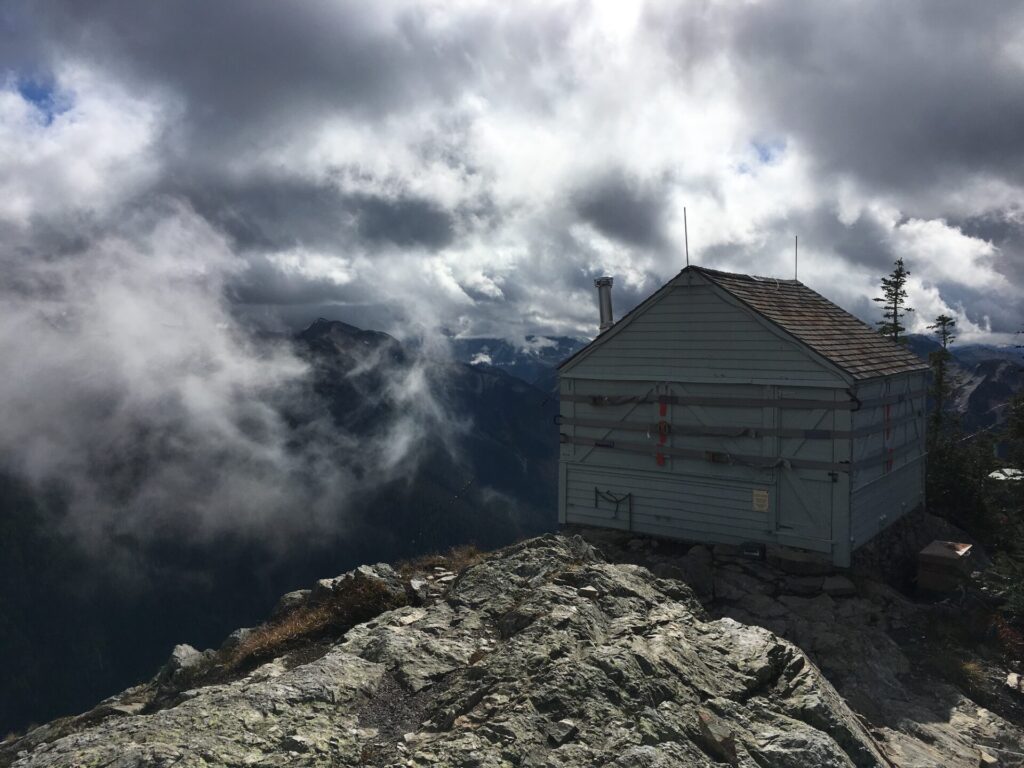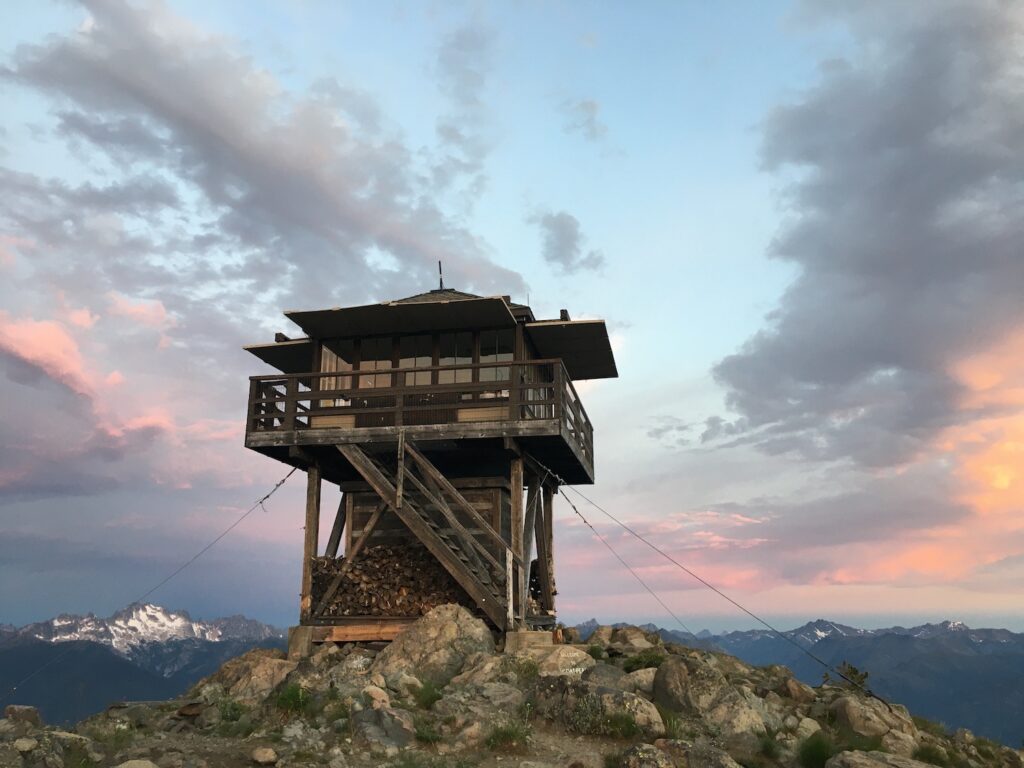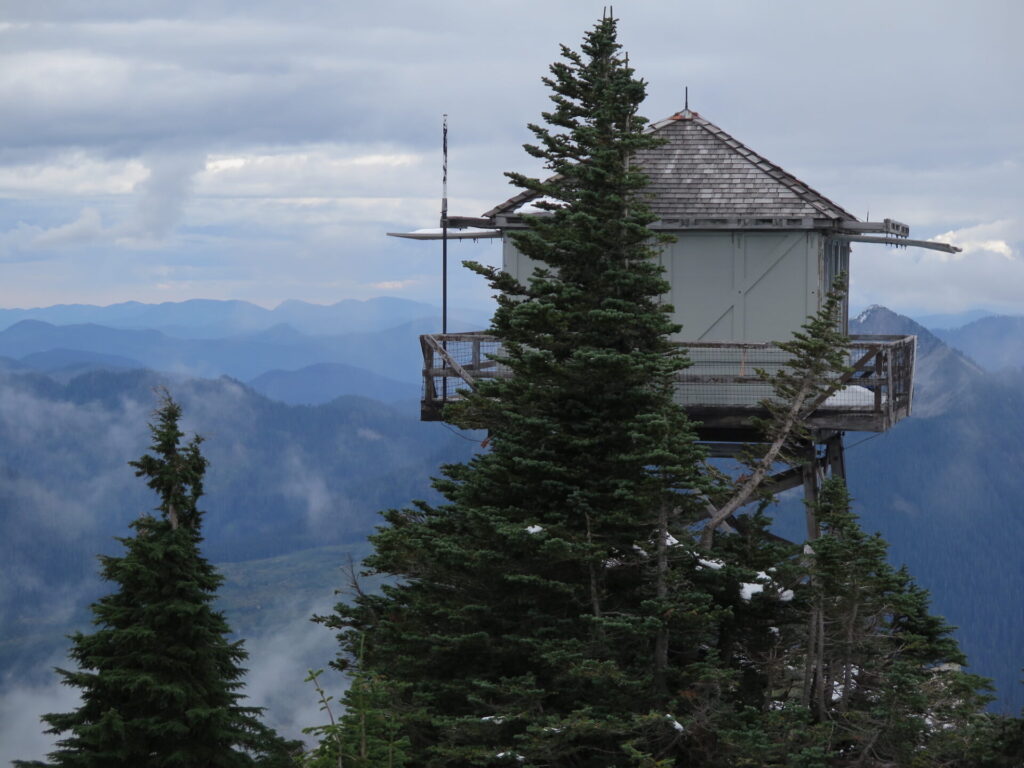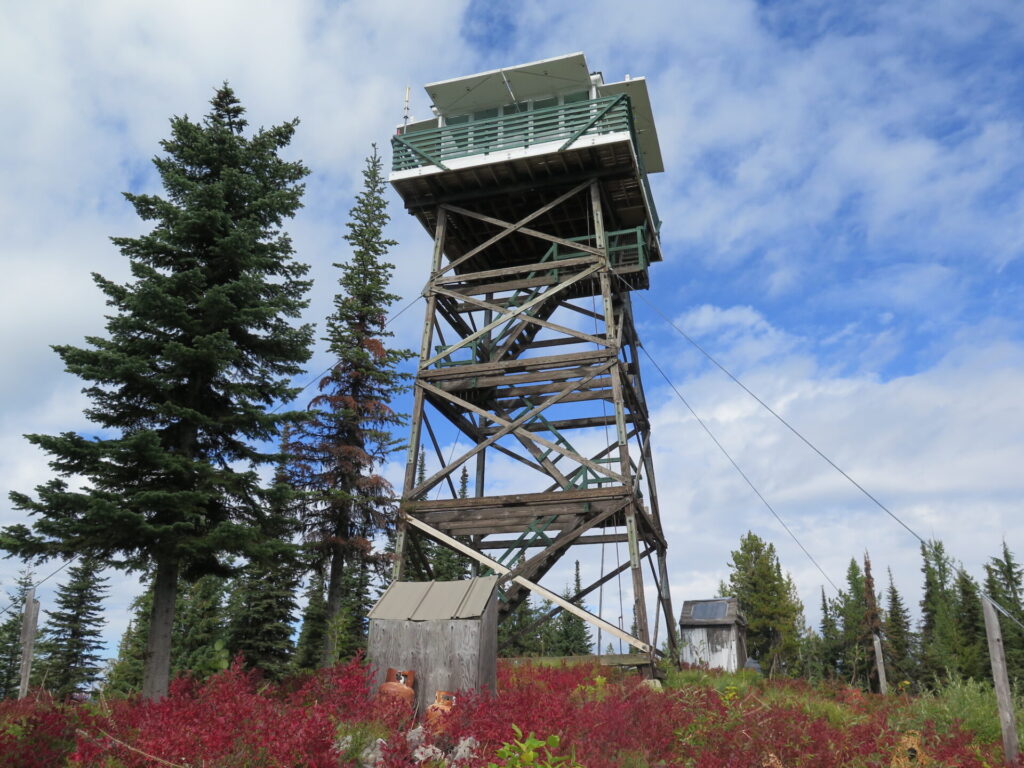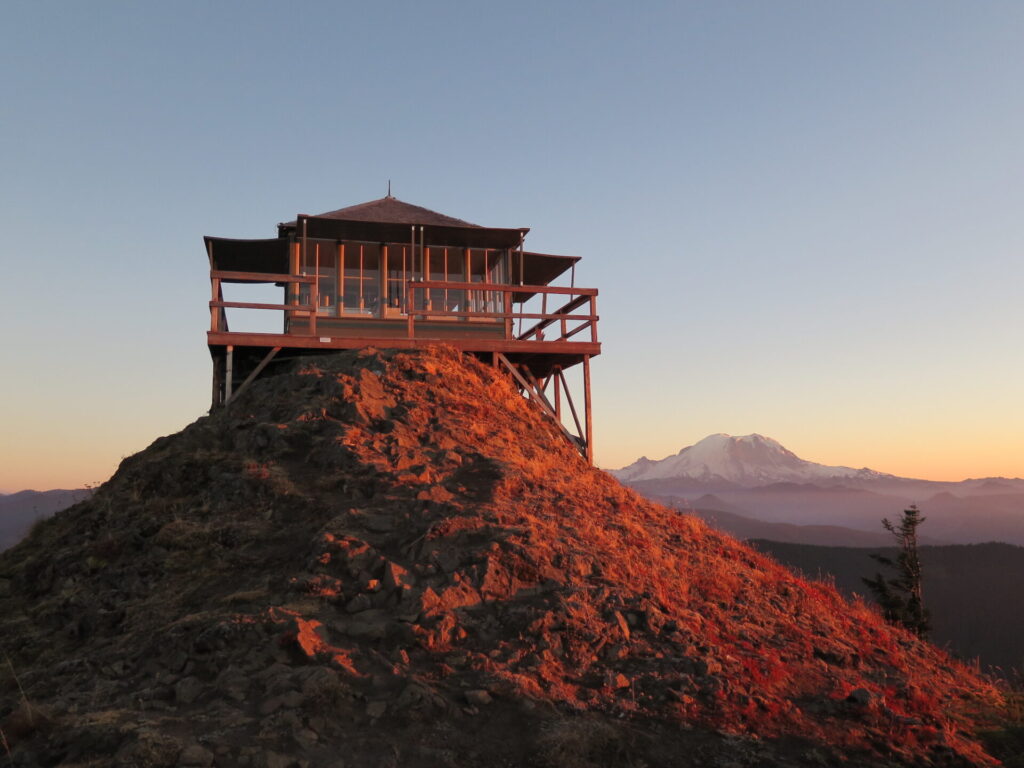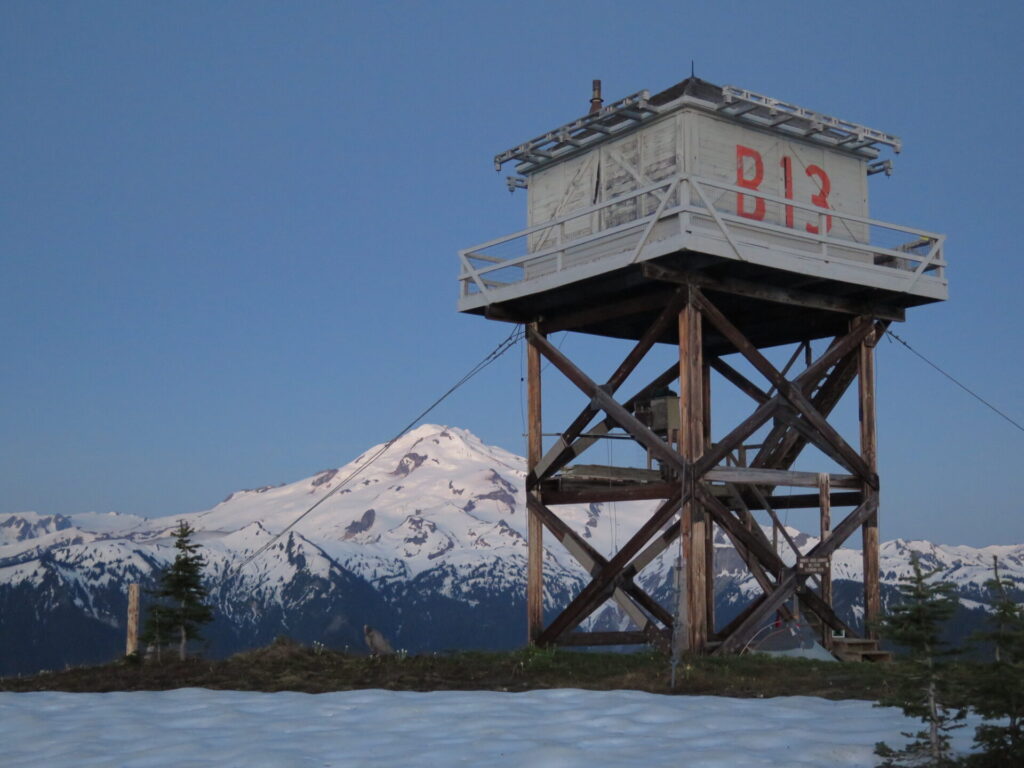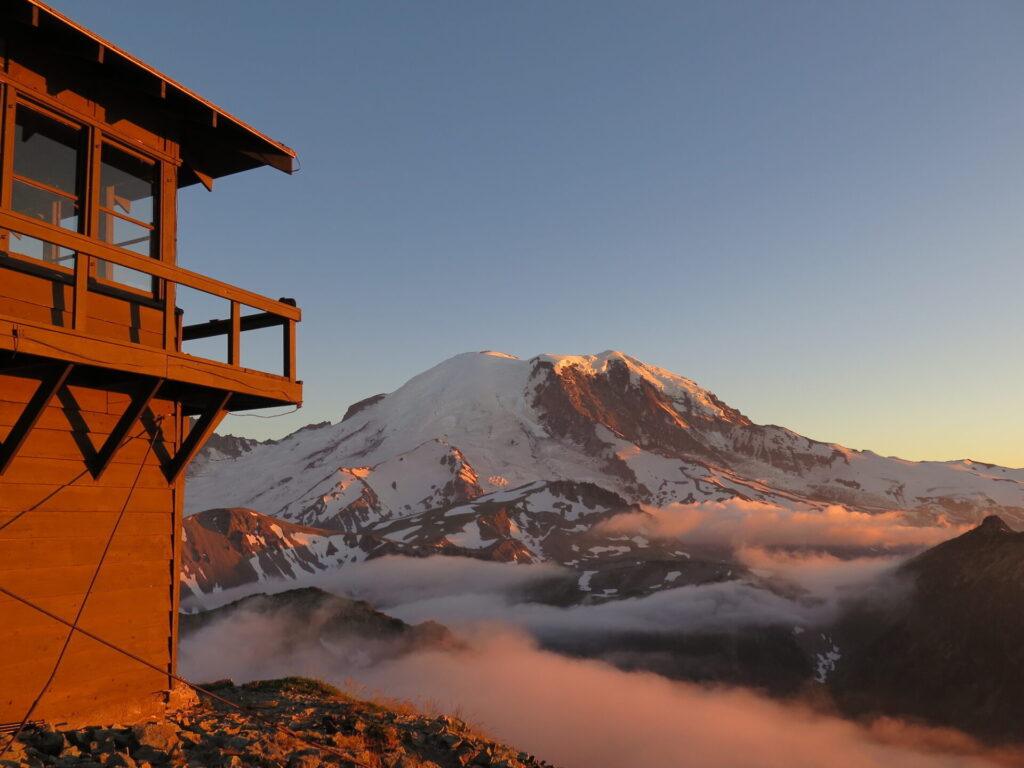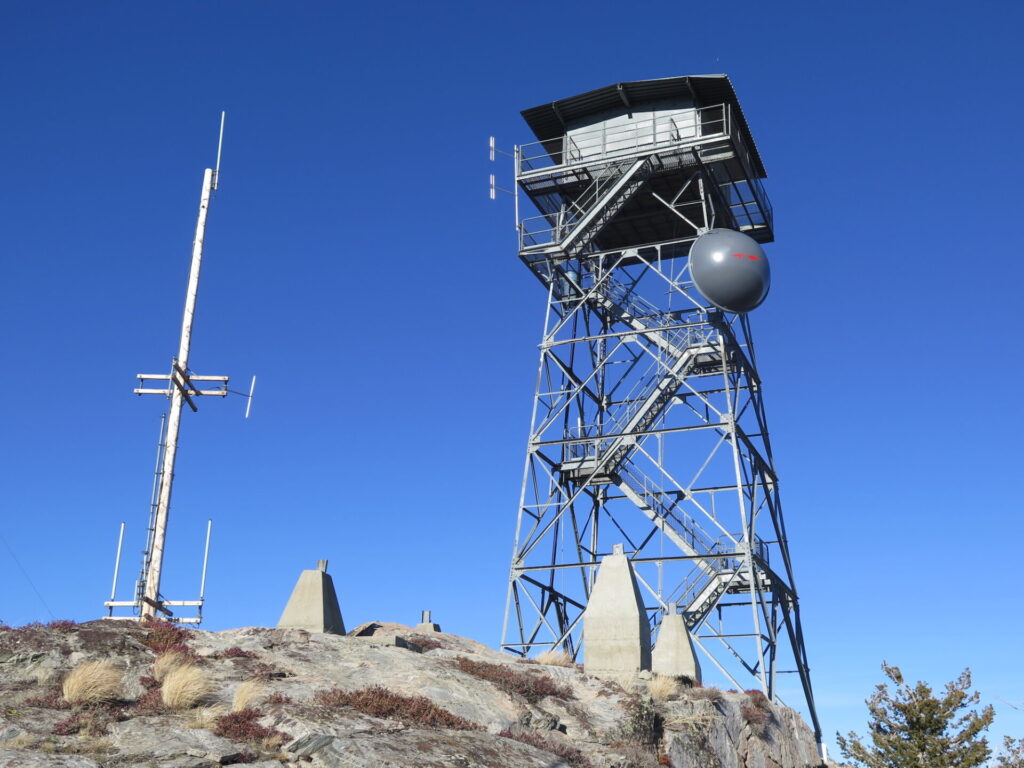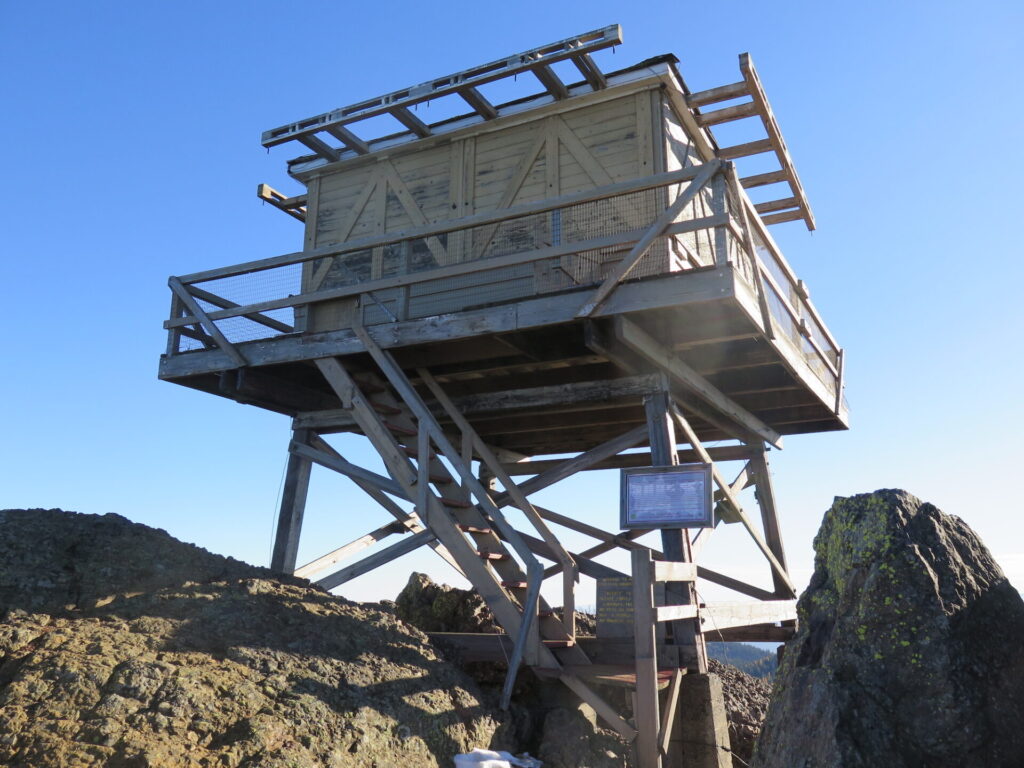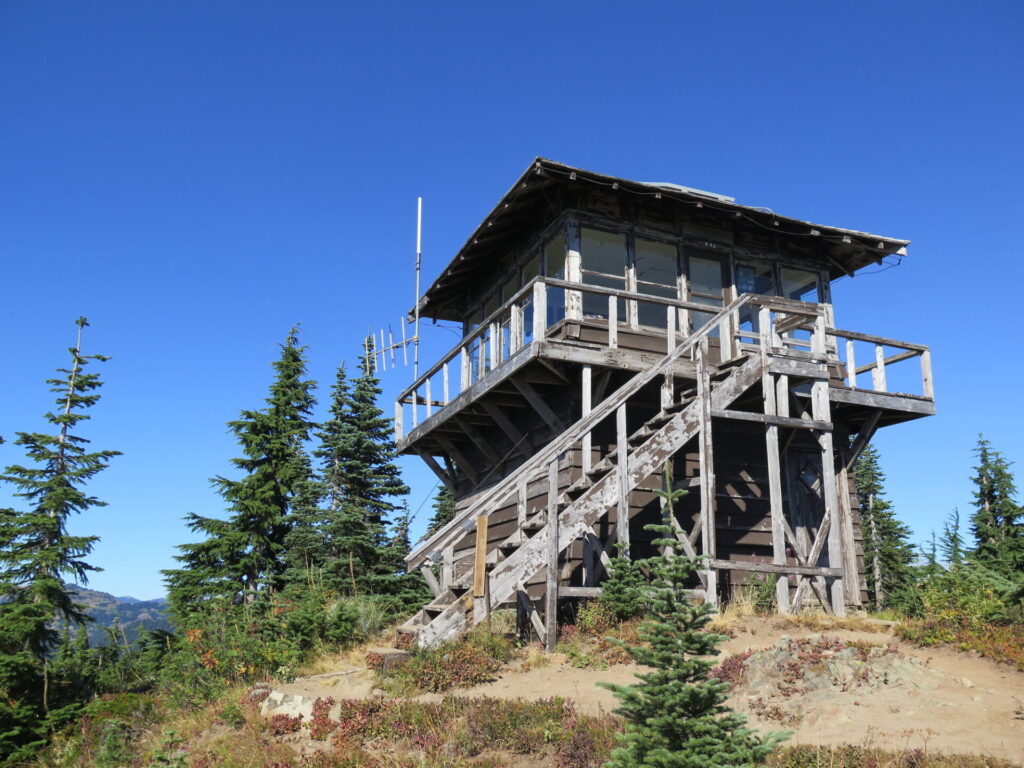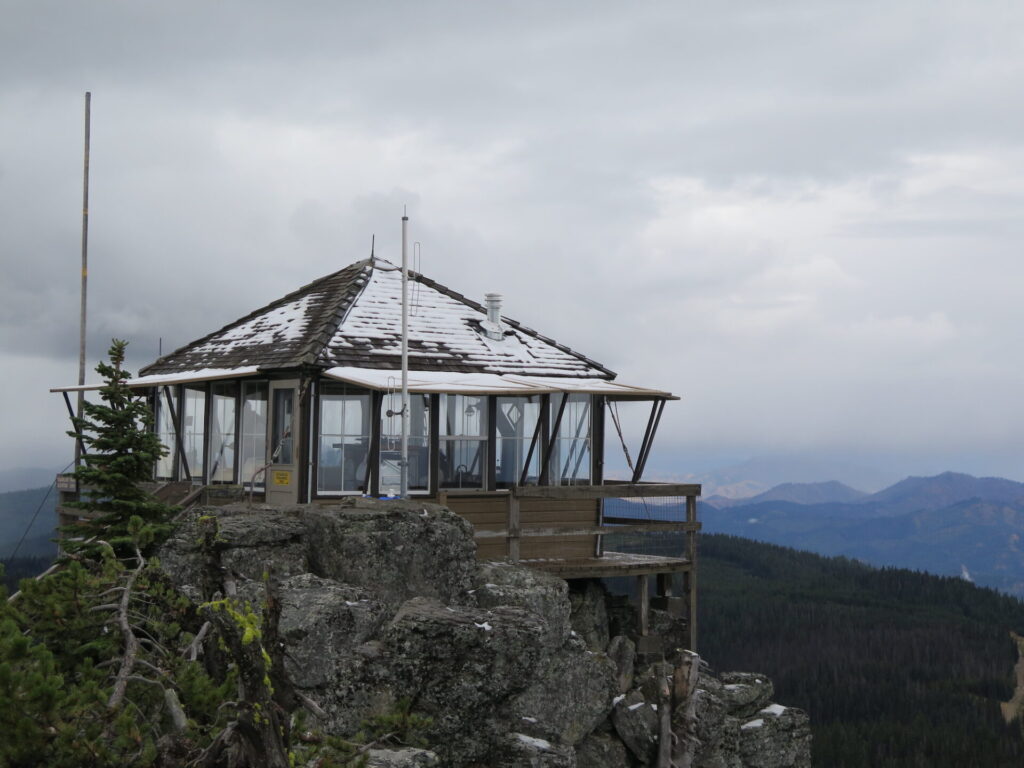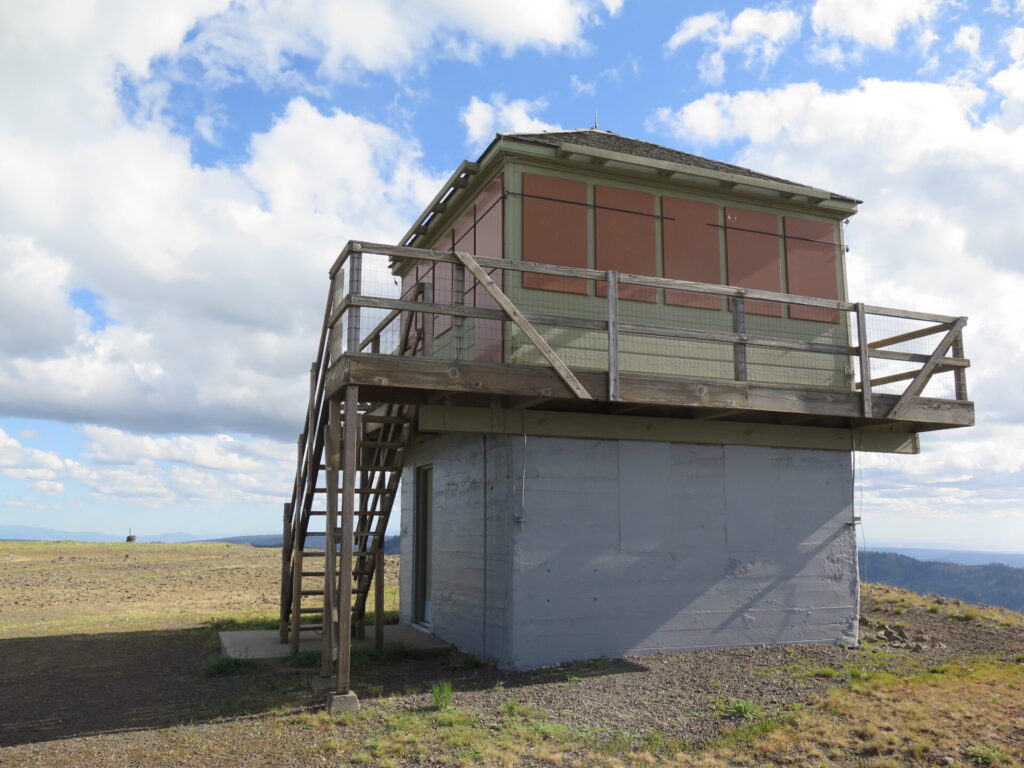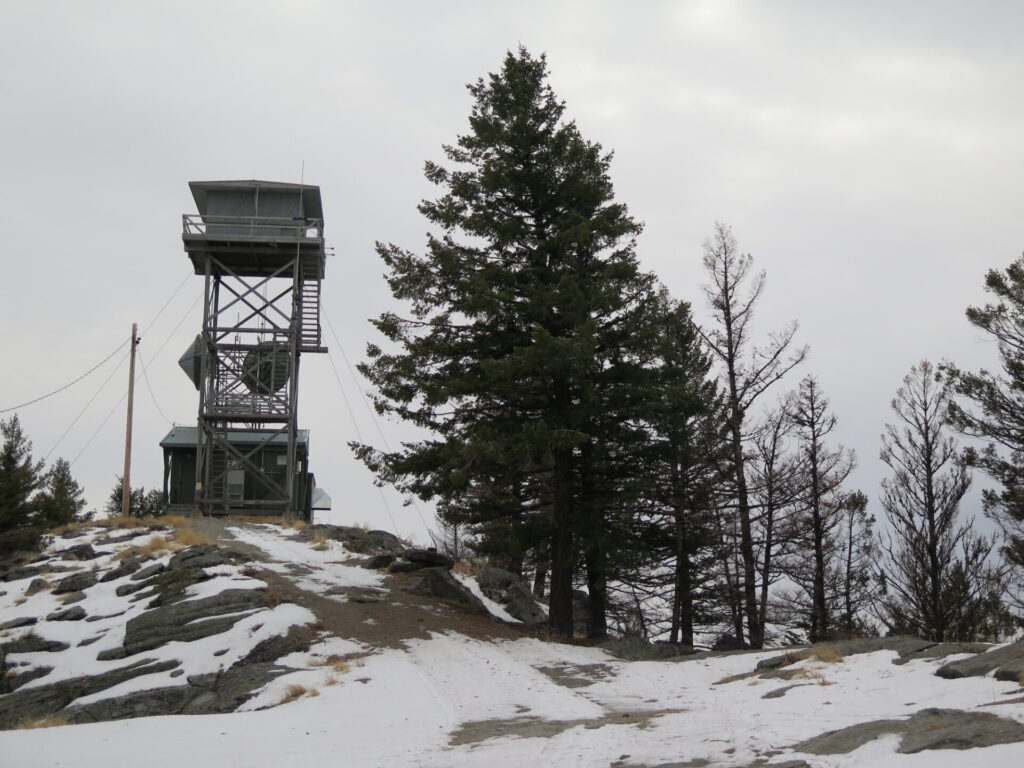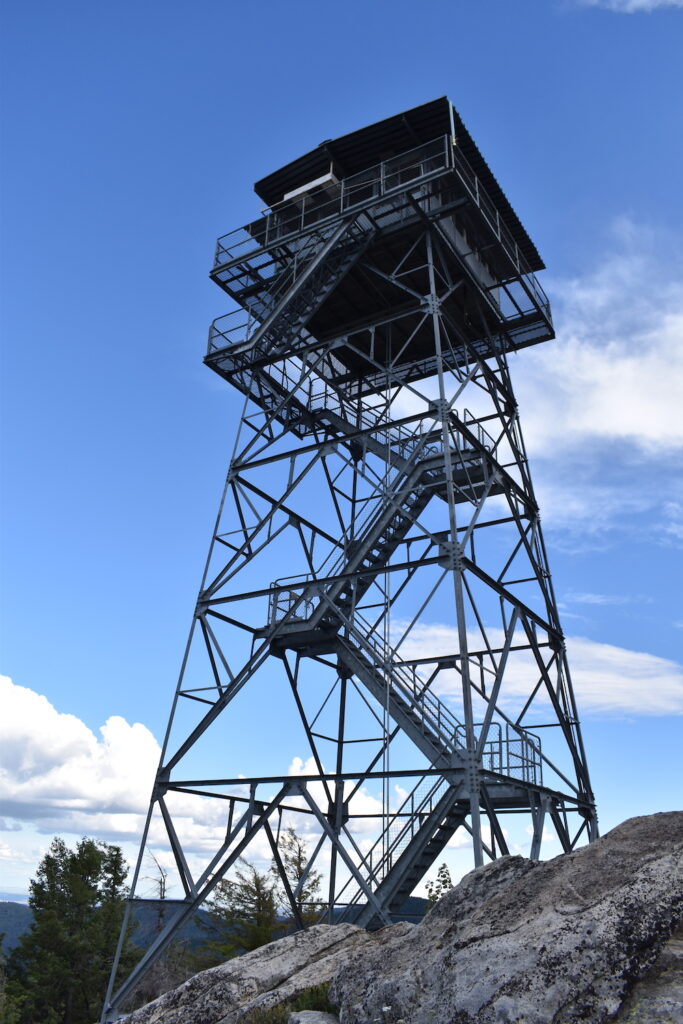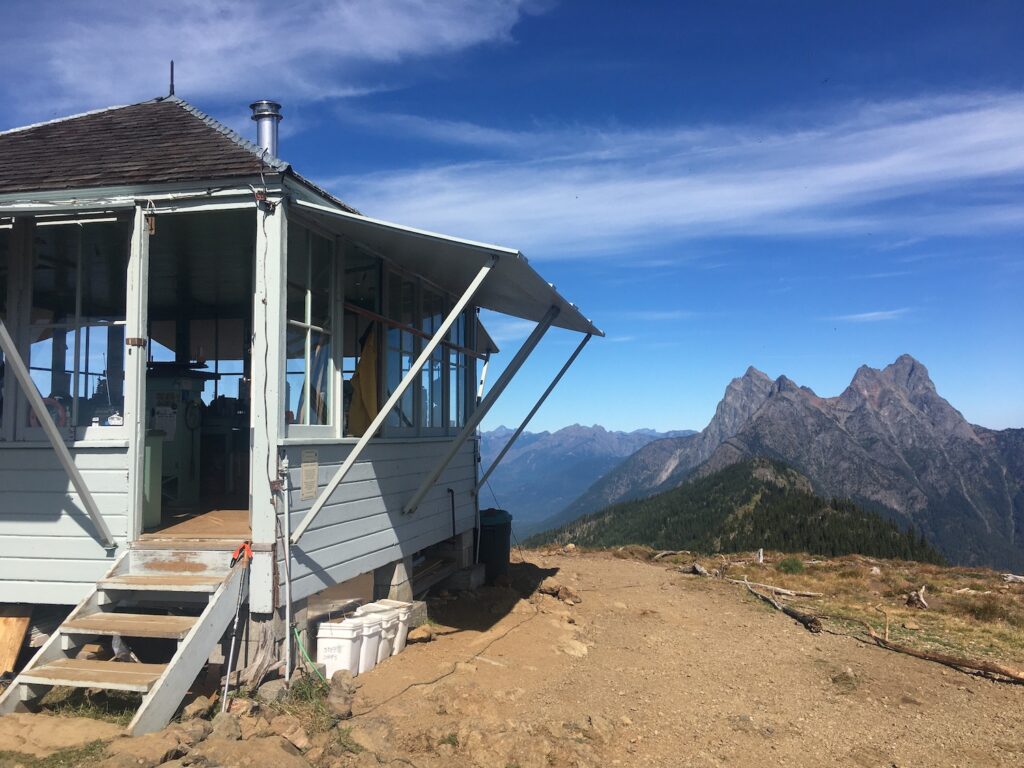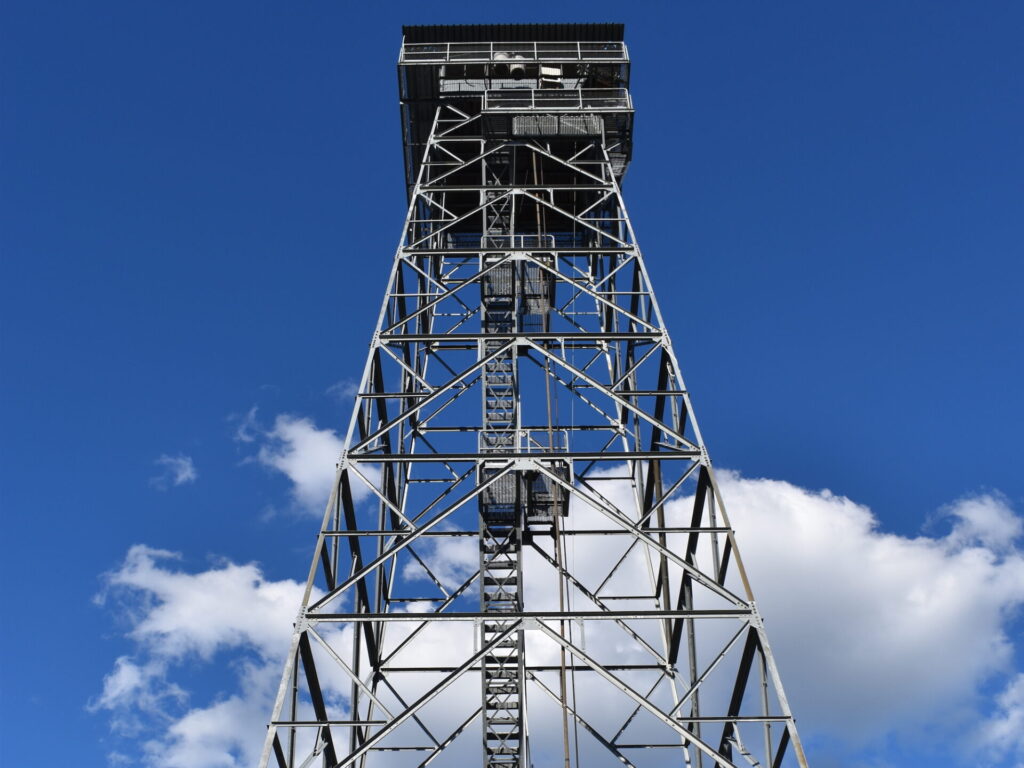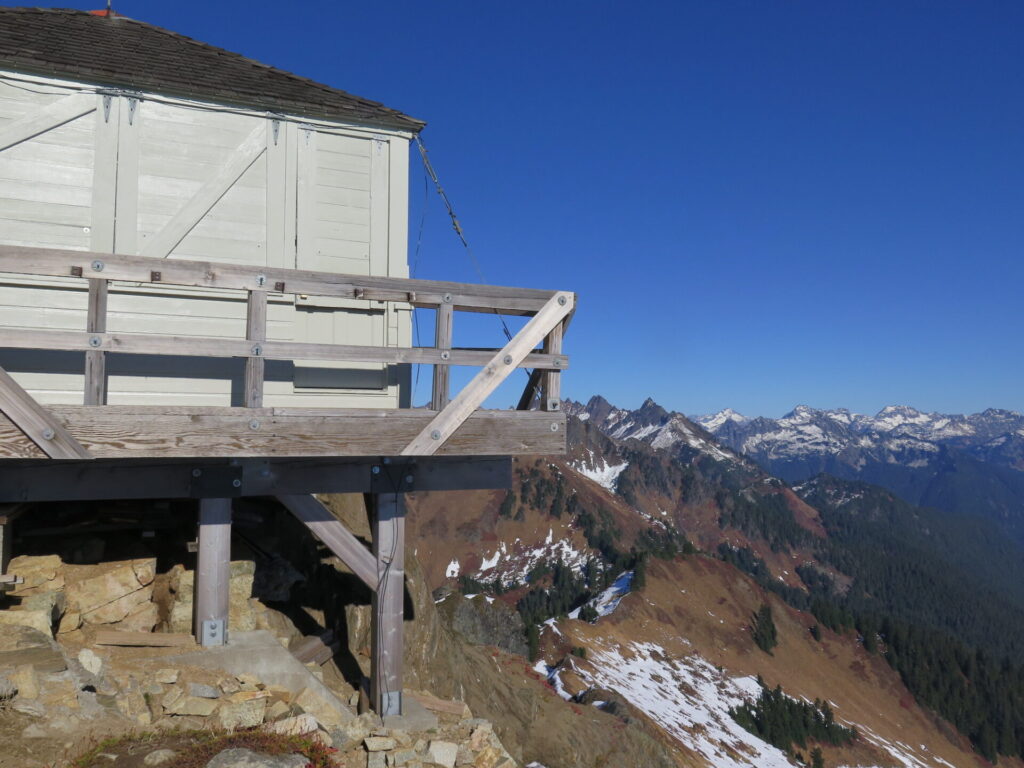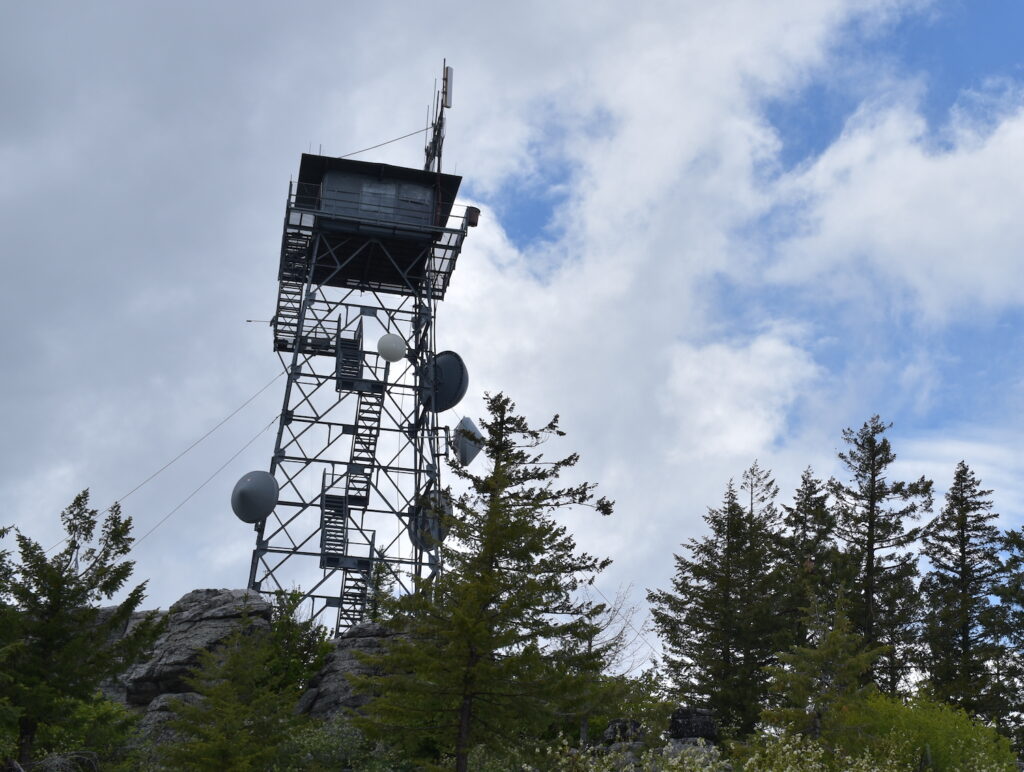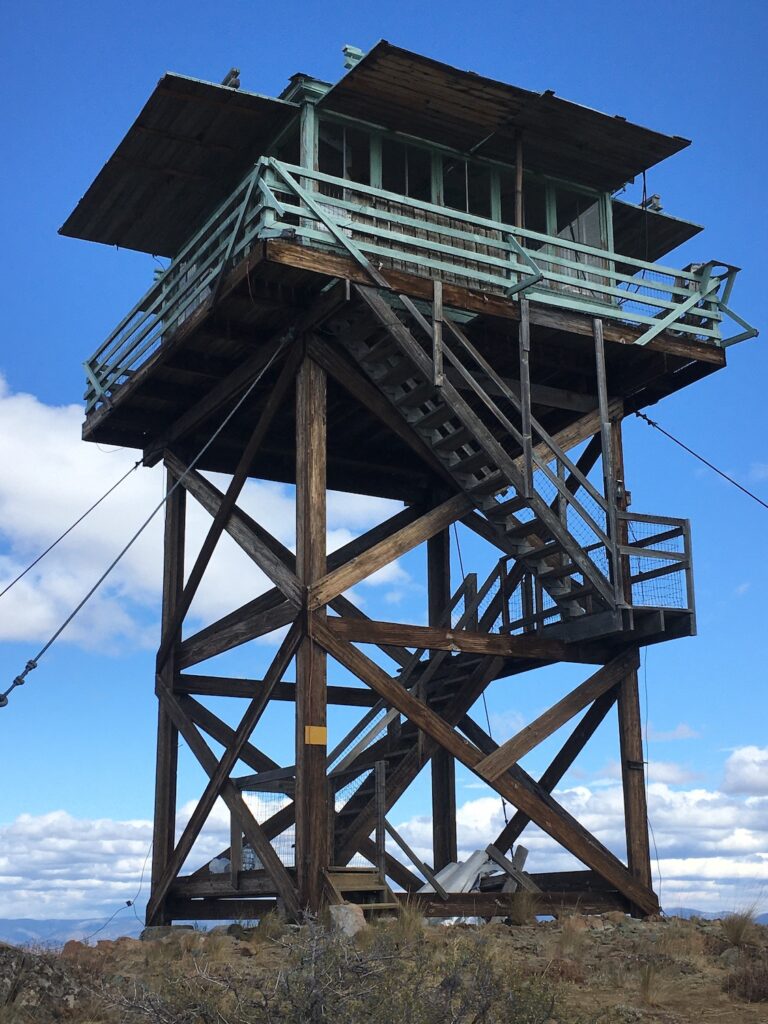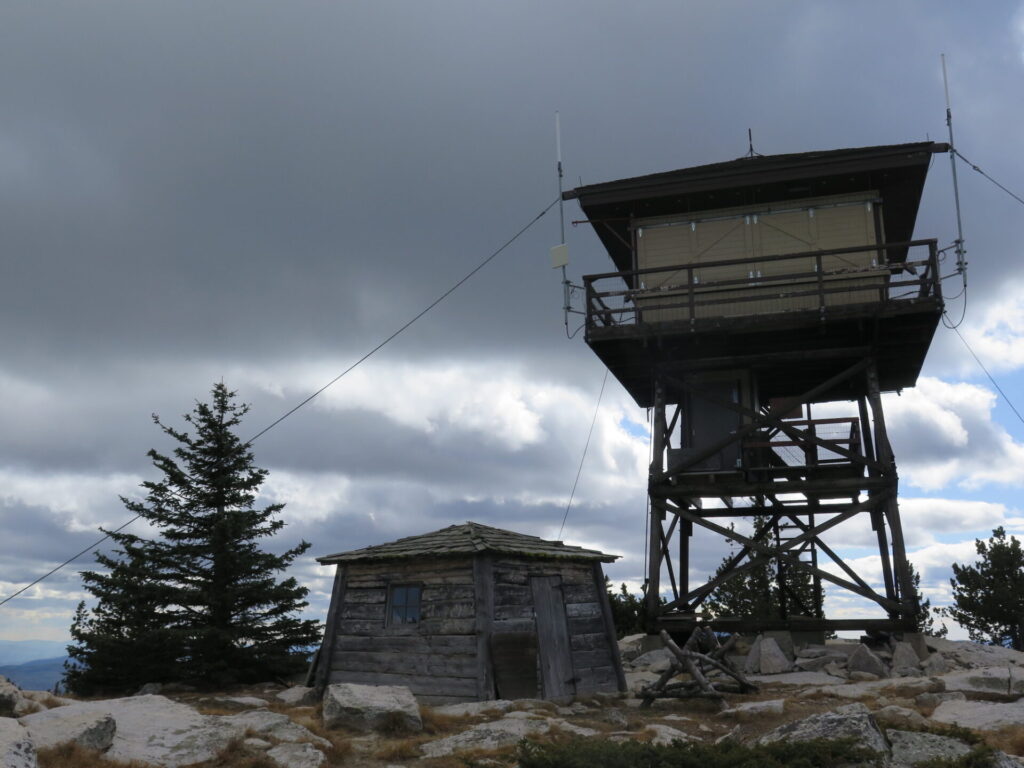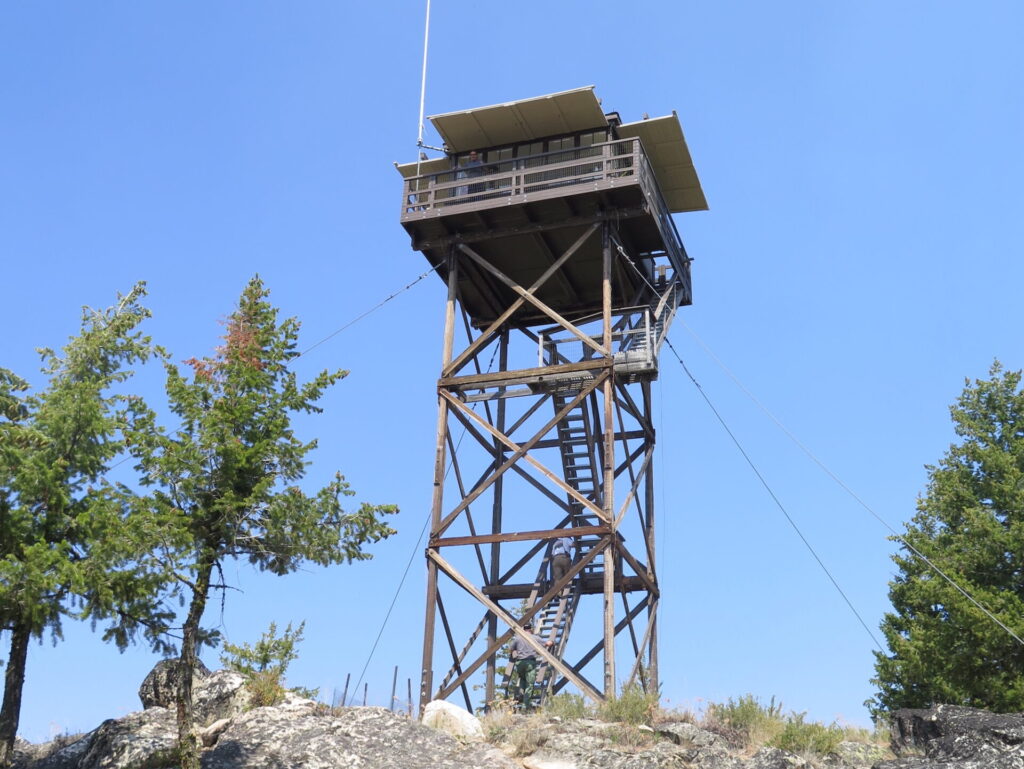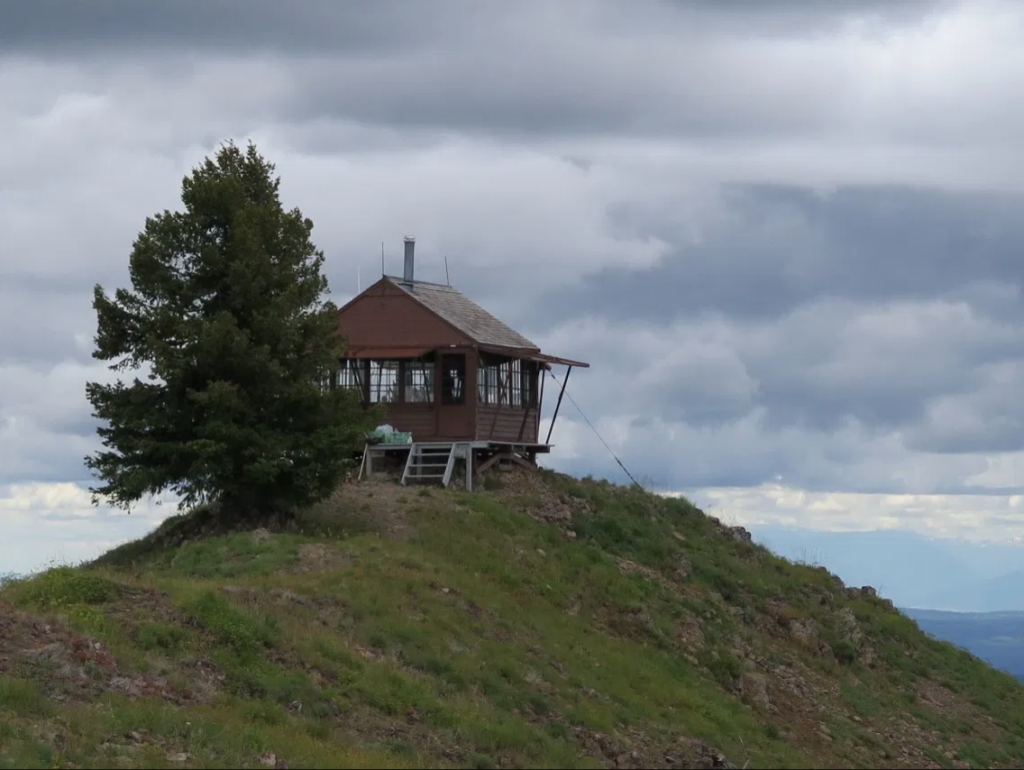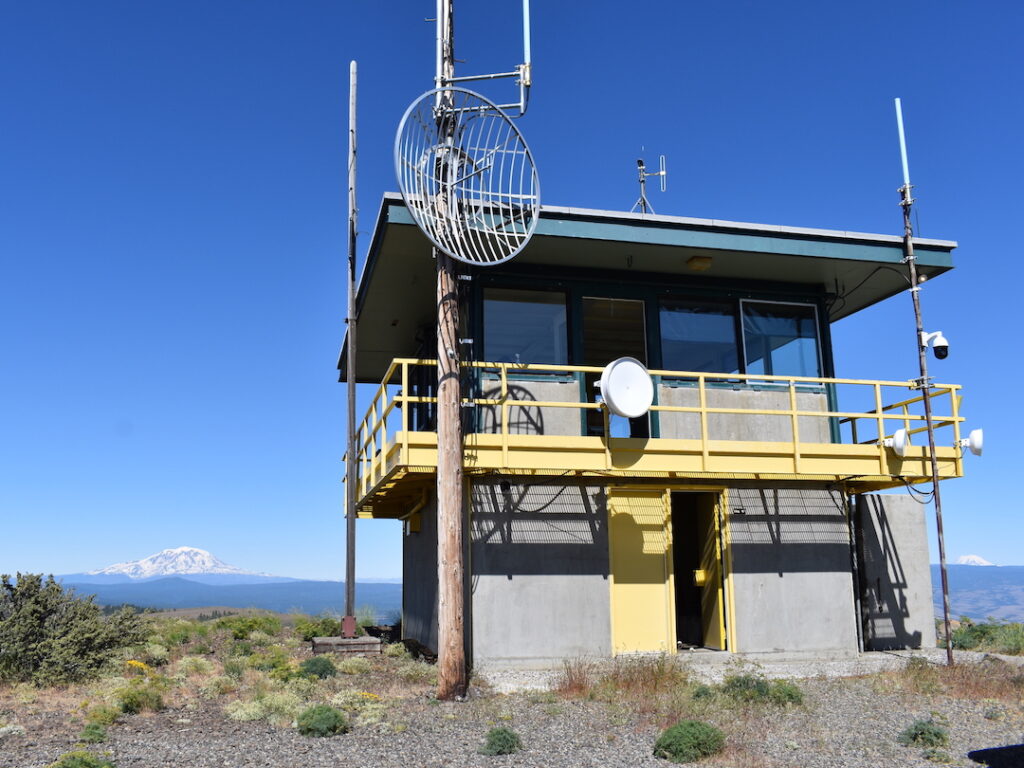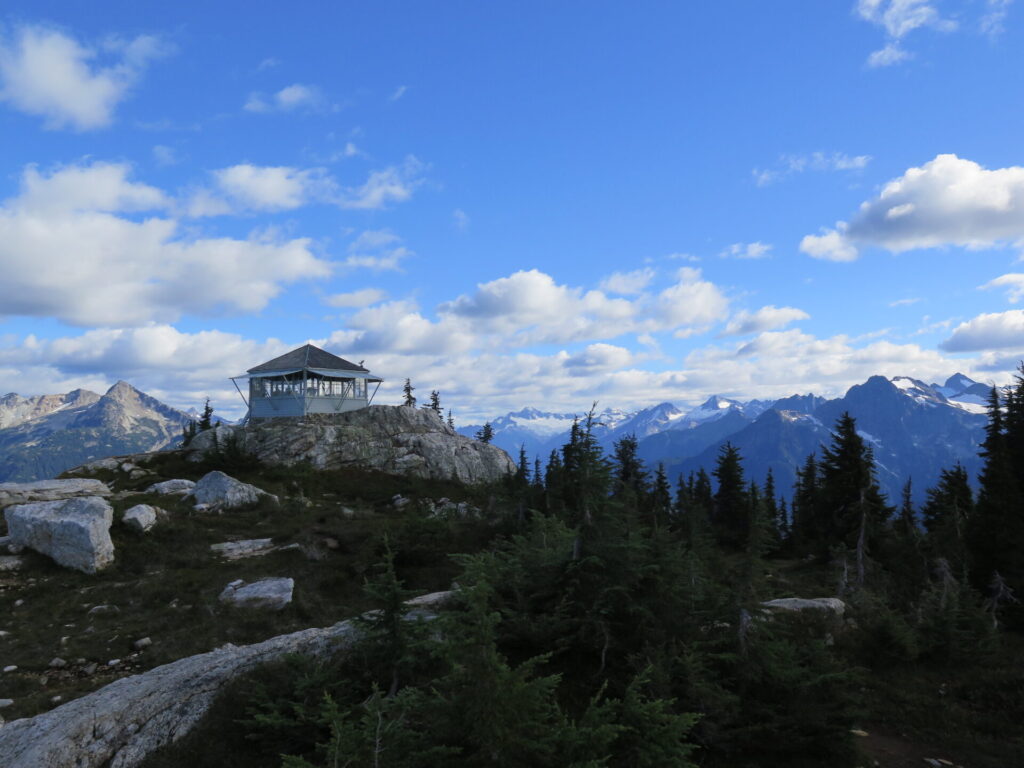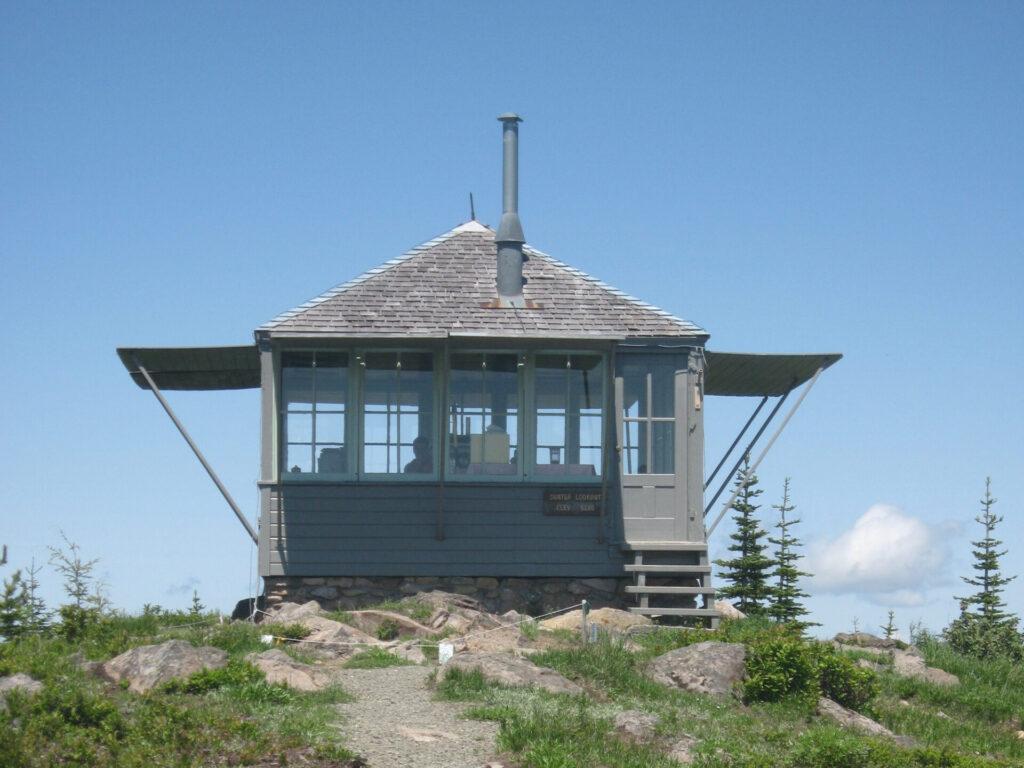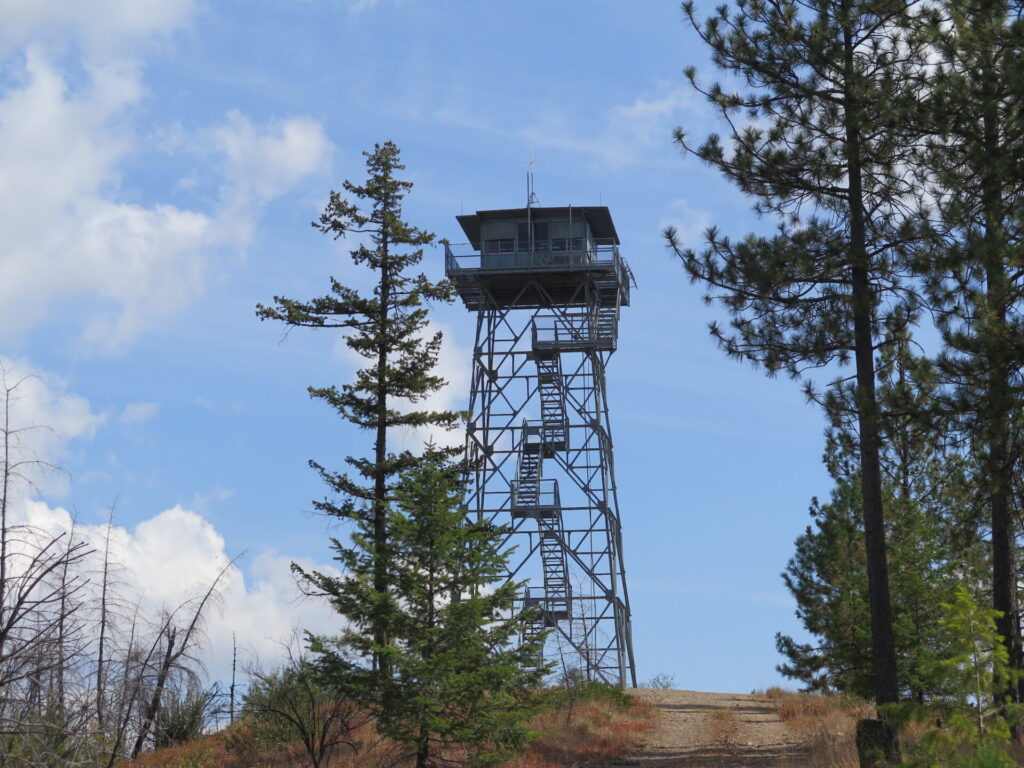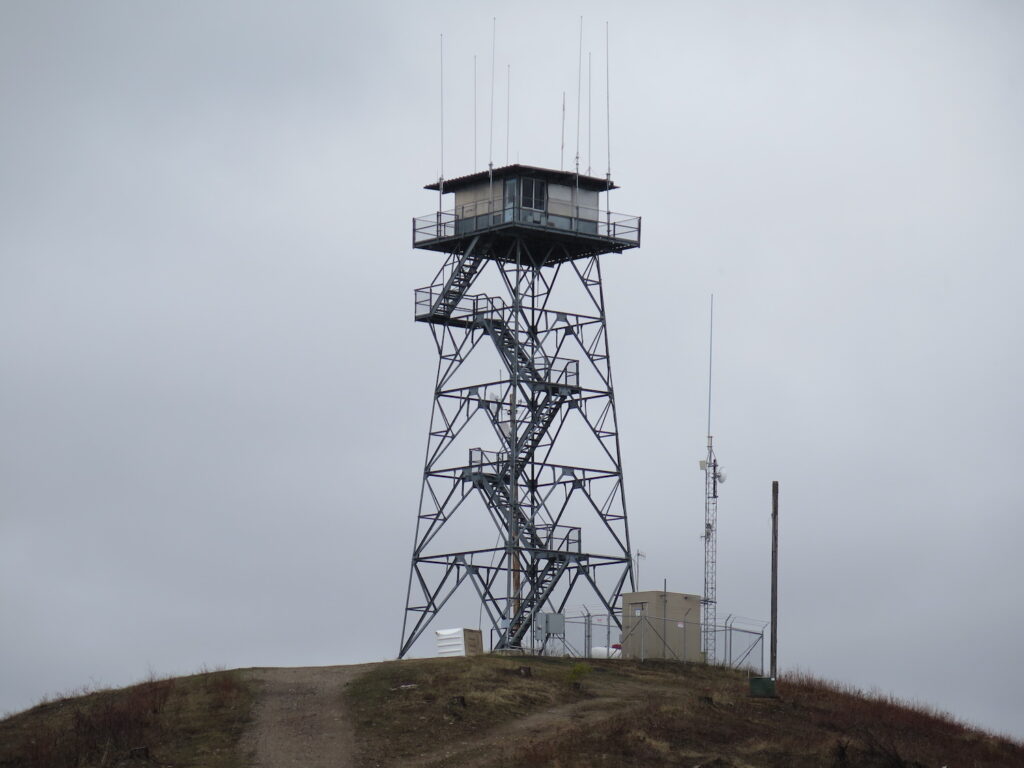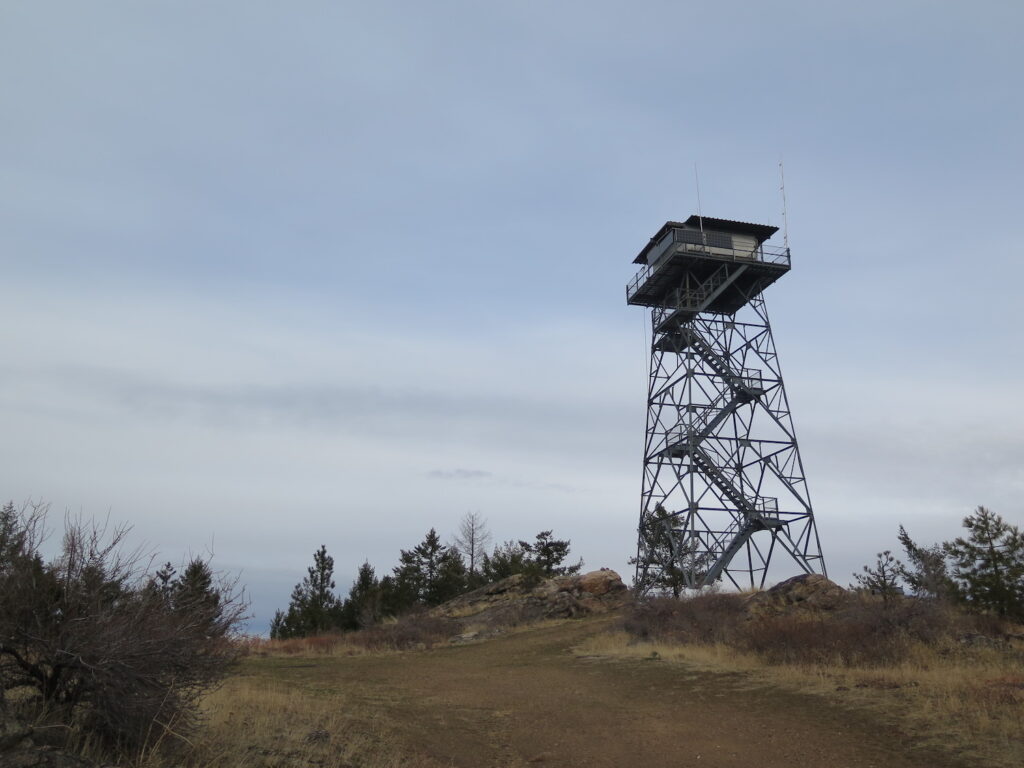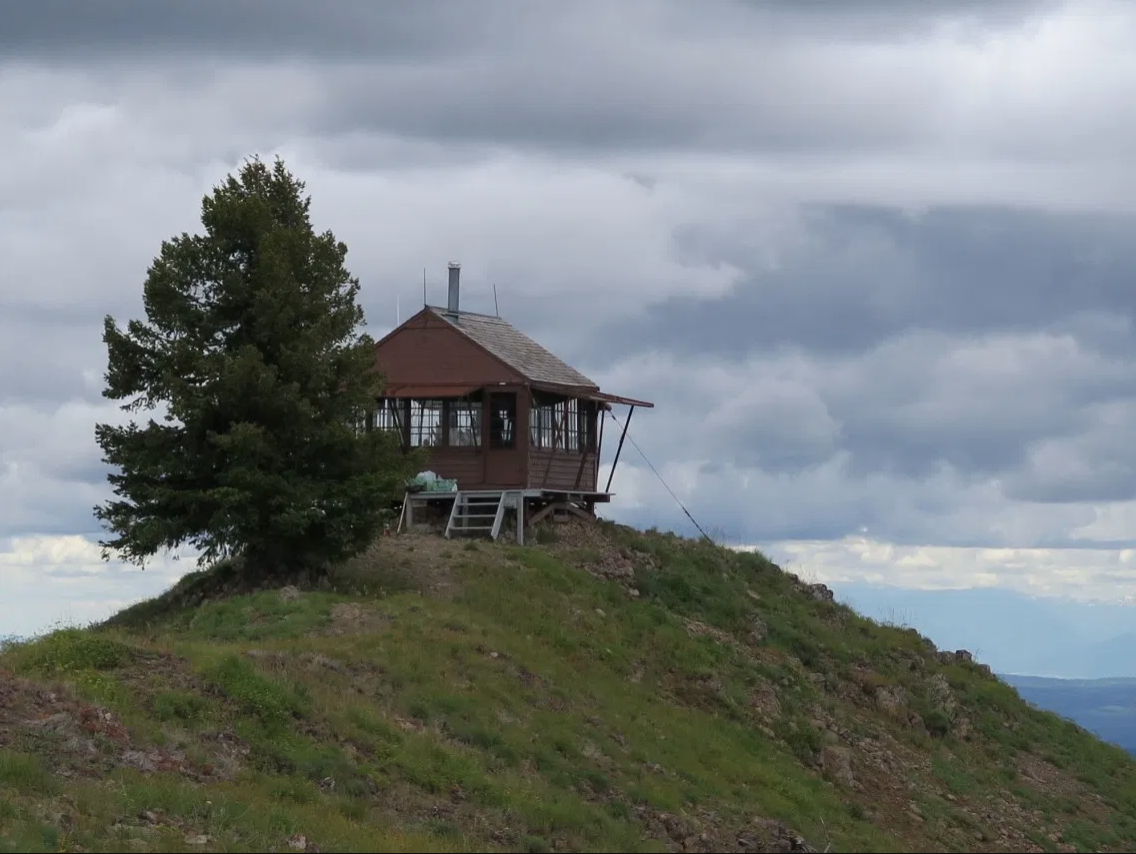It may surprise you that two dozen or more of our remaining historical lookouts here in Washington State are still actively staffed or on standby status, which is about a quarter of our lookouts. Some are managed by the Forest Service, the National Park Service, volunteer groups, and numerous Reservations like the Yakima and Colville. The number of lookouts being staffed can change annually, but I’ve listed the ones I know of at the bottom of this page along with the managing agency. This is likely not a completely accurate list, so if you have updates or changes, do let me know!
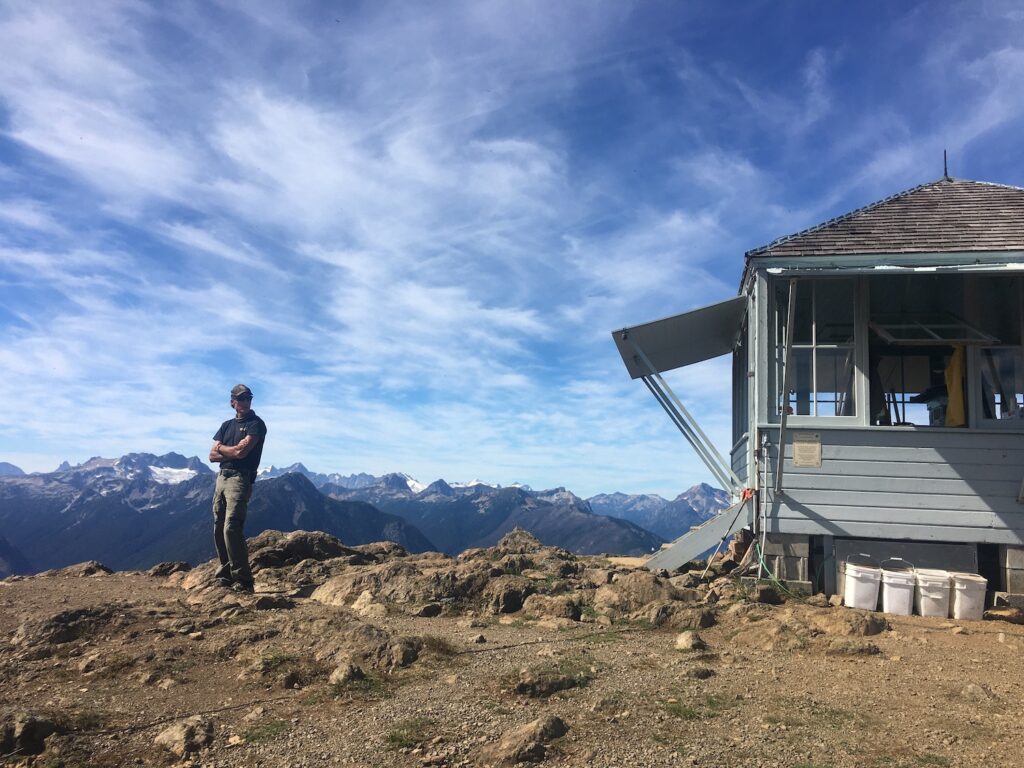
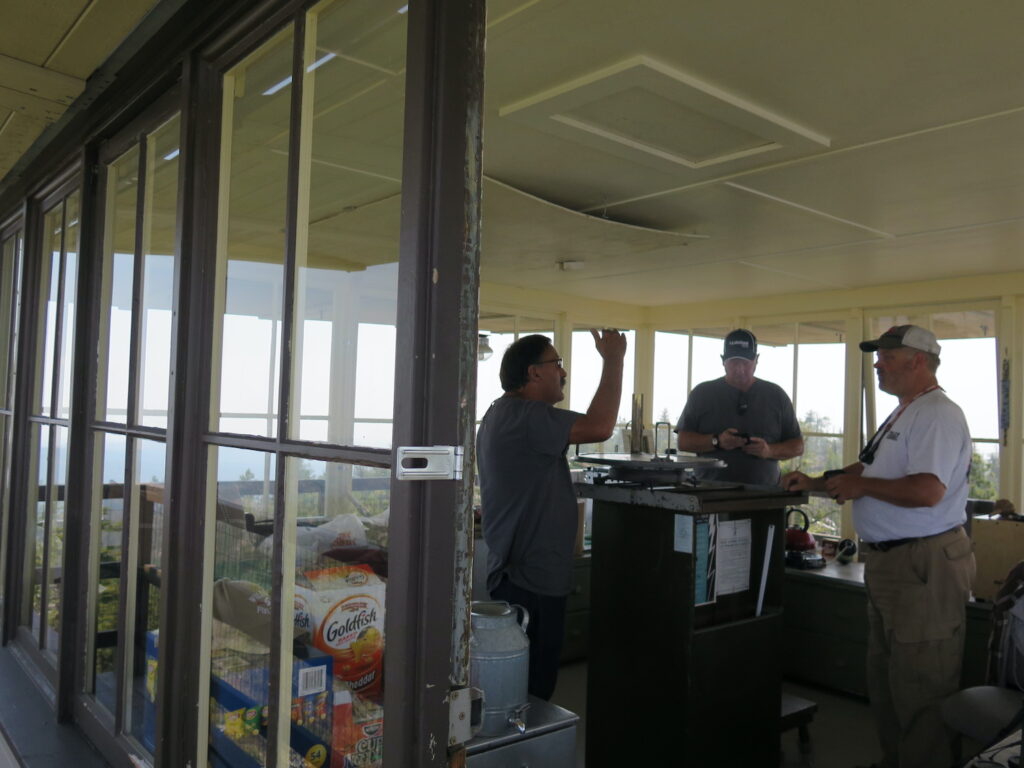
While staffing Goat Peak in Mazama last season I had many visitors who assumed I was renting the lookout, unaware that lookouts are still staffed. I even had an evening where a backpacker came up at midnight, saw the shutters up, and thought the lookout might be open for an overnight stay. He climbed the stairs and opened the trapdoor to the catwalk, but I heard him coming so I scared him a whole lot more than he scared me! He apologized profusely.
I thought I’d share some suggested etiquette tips when visiting a staffed fire lookout since these structures also serve as a home for the lookout on duty, sometimes for several months.
Visiting a Staffed Fire Lookout.
Visitation is at the discretion of the lookout. Most fire lookouts are eager to meet visitors and share stories; however, they are also working and it is their decision to allow you inside. Usually a lookout will see or hear you coming and possibly step out to the catwalk to greet you. It’s polite to ask before climbing up or trying to enter the cab.
During Covid, many agencies staffing fire lookouts closed the structures to visitors for the safety of their lookouts. I allowed visitors onto the catwalk last season but not inside. Goat Peak is a short tower, so most of my visitors stayed on the ground while I chatted with them. Don’t assume it’s ok to enter the lookout cab or climb the tower without asking first.
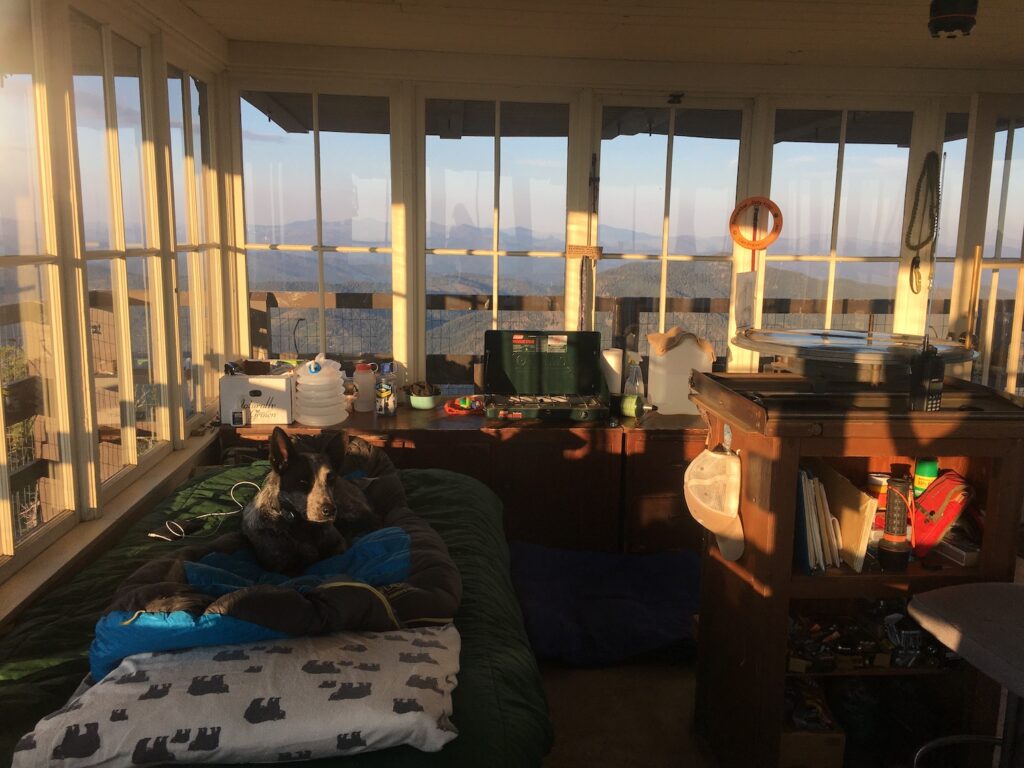
Be situationally aware, especially if fires are nearby. A lookouts most important job is fire detection and communication. During my rookie season last year at Goat I had multiple large fires near me and there were several days where I was very busy watching the fires, listening to the radio, aiding in radio relays, and talking to our District. Radio communication and dispatch requires a lot of attention so there were times when I had to close the lookout to focus on the situation at hand. Fires are very fluid and very taxing! If you visit a staffed lookout with fires nearby know that the lookout is probably very busy and not able to host visitors.
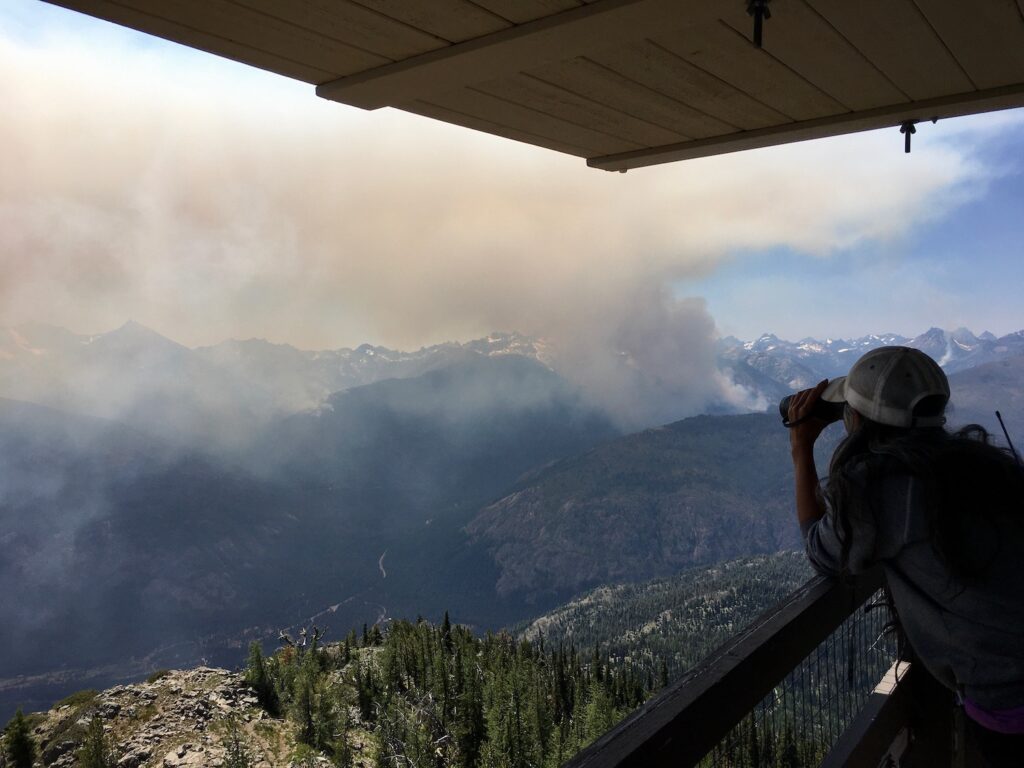
Exercise consideration for visitation hours. If you know you’re visiting a staffed fire lookout try to visit during reasonable times or be aware of your noise if visiting early or late. I know of many lookouts who post visitation hours but most simply rely on considerate judgment. This year I implemented visitation hours at Goat that are generally 8-6, at my discretion outside those times and subject to change dependent on weather or fire conditions.
Since Goat Peak is at 7,000’ in the North Cascades, daylight comes early and the days are long. I’m almost always up at 4am with the sunrise, then I’m generally on duty from either 6am or 8am to 6pm or 8pm depending on fire conditions. I generally have a lot of visitors and it can be a long day so I’m usually stretched out in bed by 8 or 9. It’s pretty rare that visitors reach the summit of Goat before 6 or 7am but more often I have late evening hikers. Sometimes I don’t mind and have shared some beautiful sunrises and sunsets with some great folks! Other times I’m trying to relax for the first time in my day. Just know that you might not catch a fire lookout at their most social time before or after hours since they’re probably having breakfast, dinner, or relaxing after a long day.
At some lookout sites, camping is not allowed on the summit. If it is, definitely be courteous after hours if you’re camping near the lookout. It’s best to check with the managing agencies about any restrictions.
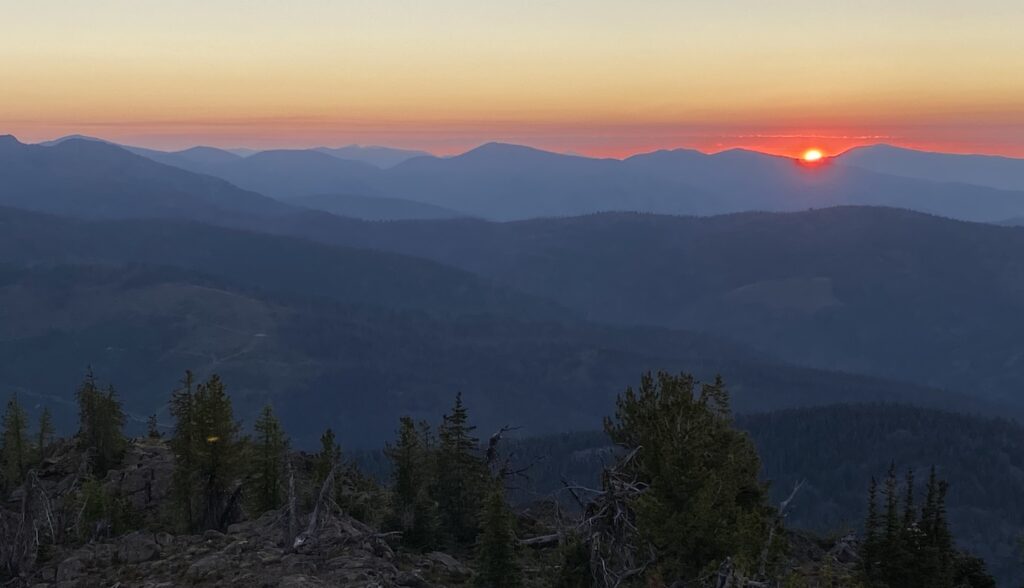
Pack it in, pack it out. It goes without saying but whether you camp near a lookout summit or make it a day hike, definitely pack out whatever you bring with you. Since I hike to my lookout, I have to pack out anything left behind.
Avoid hiking to a lookout in a lightning storm. I’ve had several times where hikers have tried to hike to the summit while lightning was striking within a mile or two of the lookout. If there is active lightning in the area do not put you or the staff at risk by trying to hike up and enter the lookout. Goat Peak is a very prominent fire lookout with a high likelihood of being hit by lightning. I stay inside when active weather is in the area and do not like to put myself at risk going outside to let visitors in. During storms, lookouts are often busy watching lightning strikes, spotting fires, and radio communication. It’s not a convenient time to visit.
Do not fly a drone at a staffed lookout with permission. Drones are never allowed in wilderness areas, period. If you’re visiting a staffed fire lookout outside a wilderness area, please do not fly a drone up to the lookout without checking in with the lookout on staff first. This season at Goat I was surprised more than a few times by a drone suddenly peering through the windows. It was rude and intrusive, especially since signs this year clearly indicated Goat Peak was staffed. Please respect the privacy of a staffed lookout and if there are fires in the area, keep your drone grounded.
The last suggestion when visiting an active fire lookout?
Bring a treat! Ok, you really don’t have to, but just about every lookout I know won’t turn down fresh fruit, vegetables, or a little treat. Last year I was overwhelmed and incredibly grateful to all the folks that hiked up supplies and goodies to me during the fires. At one point though, I ended up with six baguettes from the Mazama Country Store, ha! I started feeding summit visitors with them and sending them back down the mountain with excited hikers so they wouldn’t go to waste!
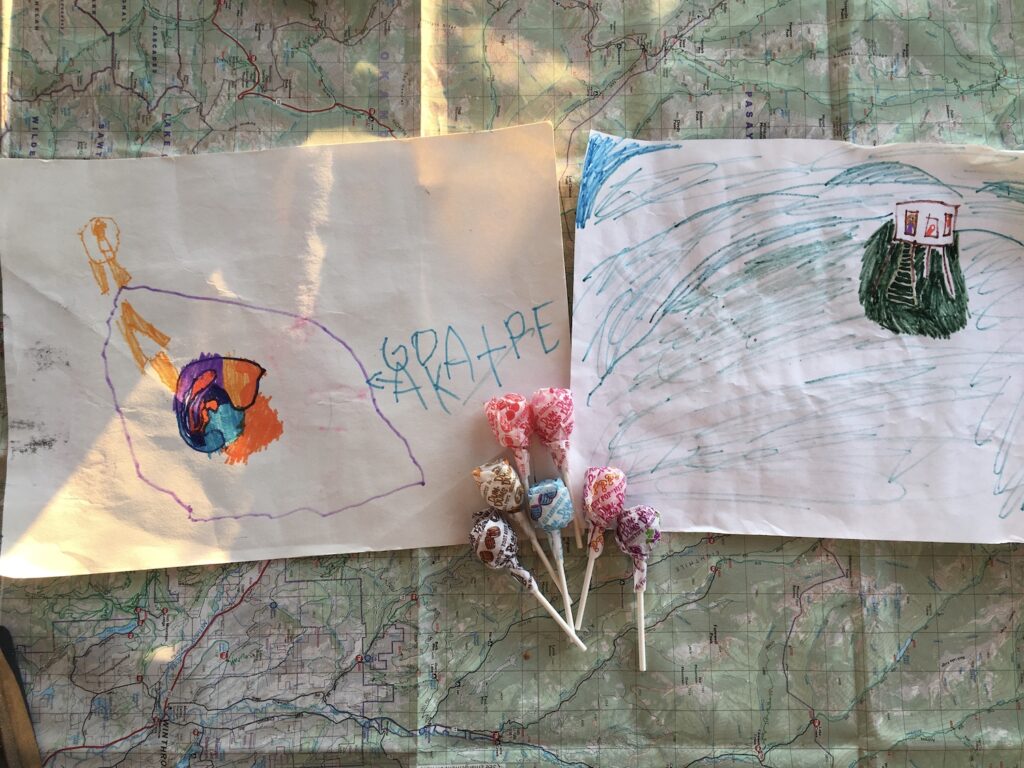
Most importantly, have fun!
Some lookouts can be seldom visited and others like Goat Peak can get 50 or more visitors a day. It’s wonderful to meet so many folks but remember that for active lookouts, the lookout is our home, we have a job to do up there, and we also need to eat breakfast, lunch, and dinner, and take breaks. If there are fires or threatening weather in our area, we are likely busy, focused, and safely inside.
Enjoy your fire lookout visits this year and hopefully you get a chance to meet active lookouts who will share great stories and history. Happy lookout(ing)!
Actively staffed fire lookouts in Washington State.
